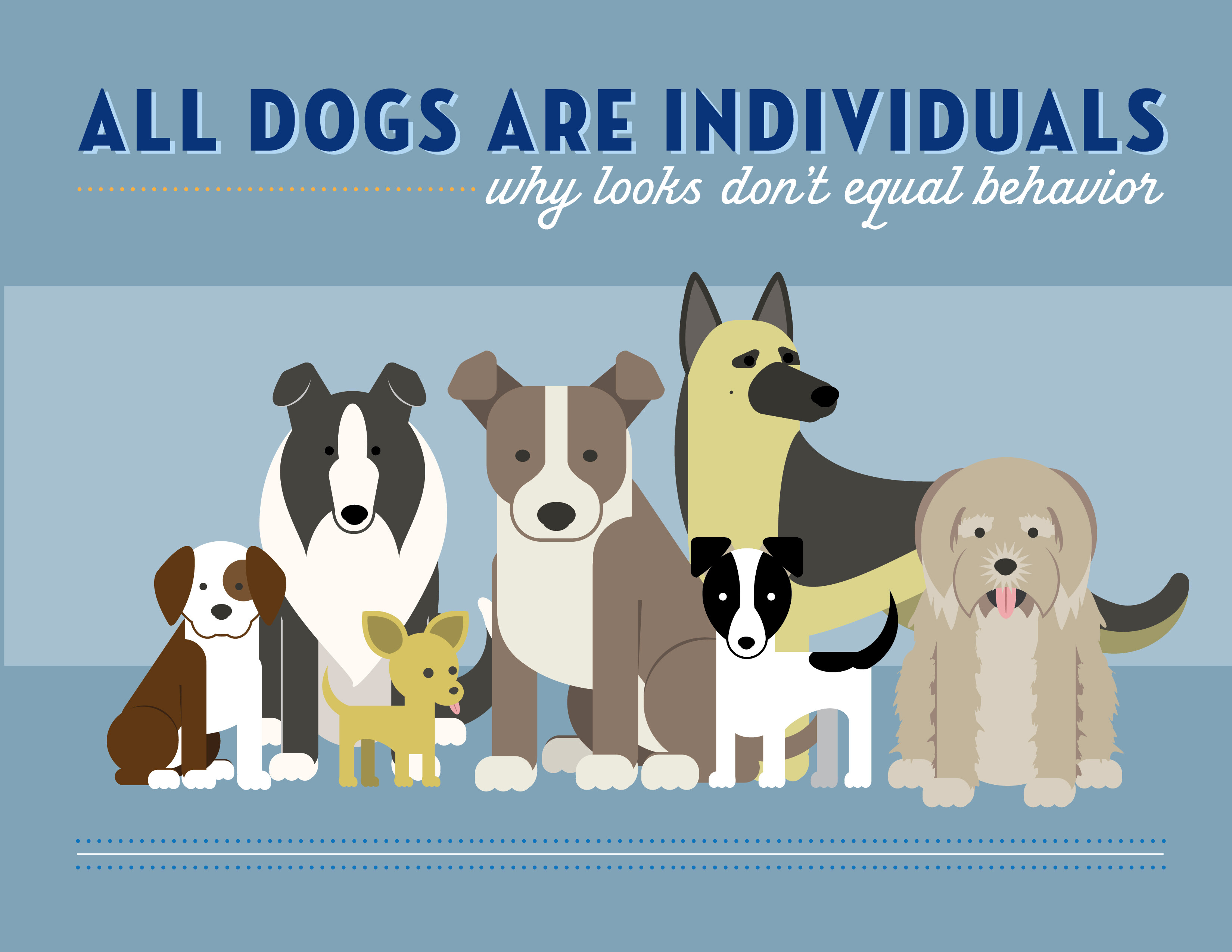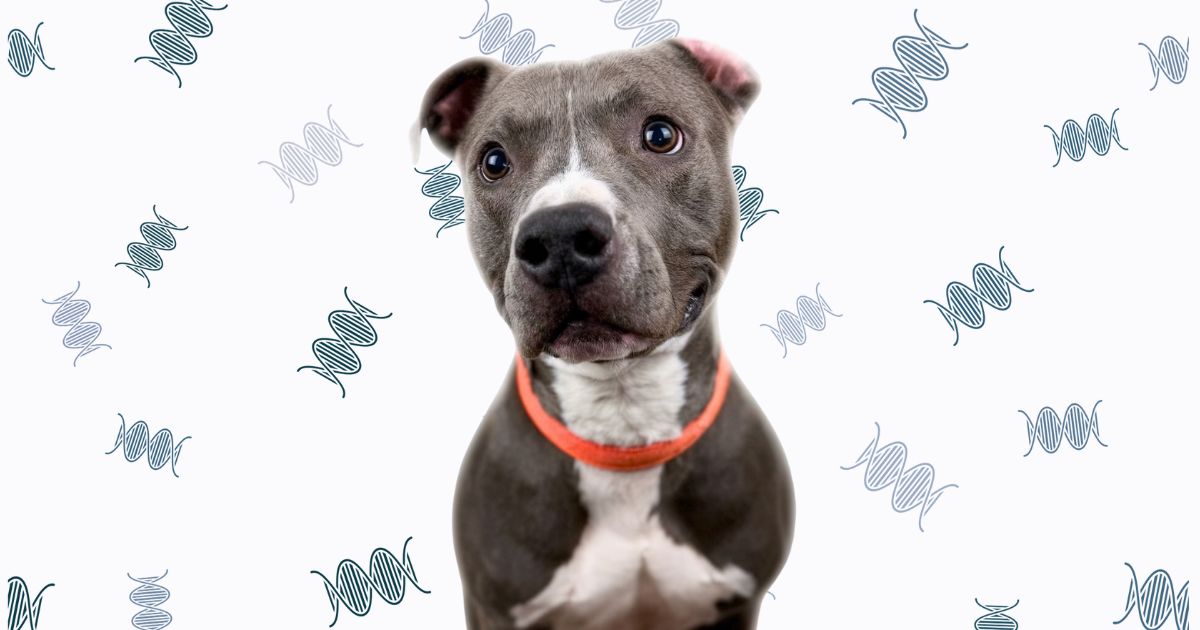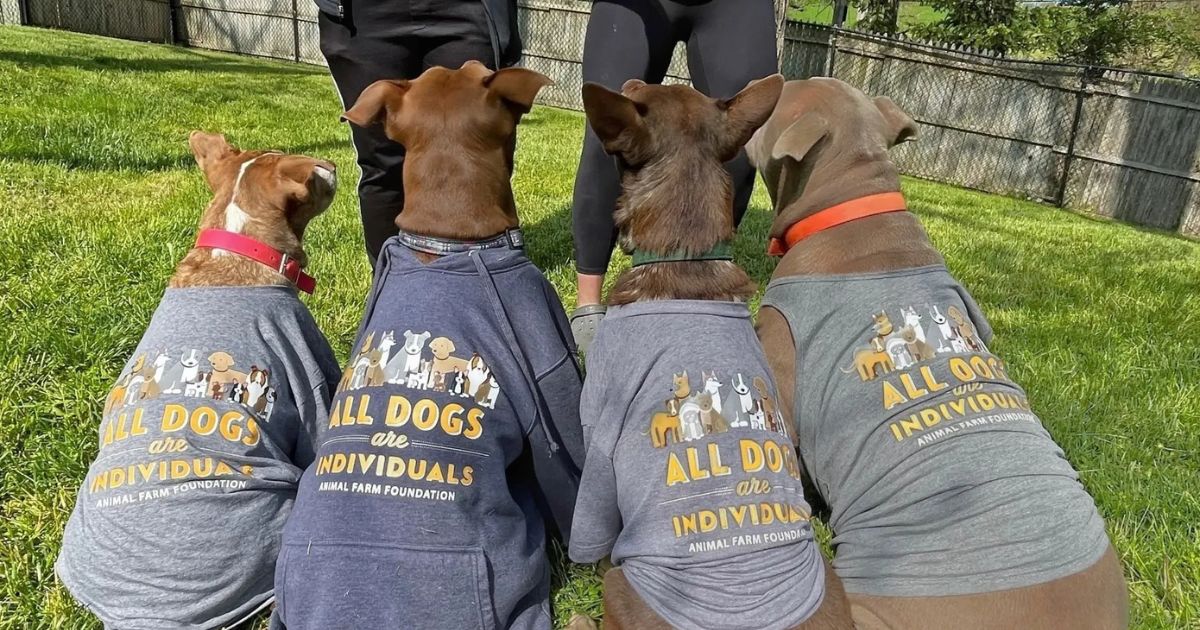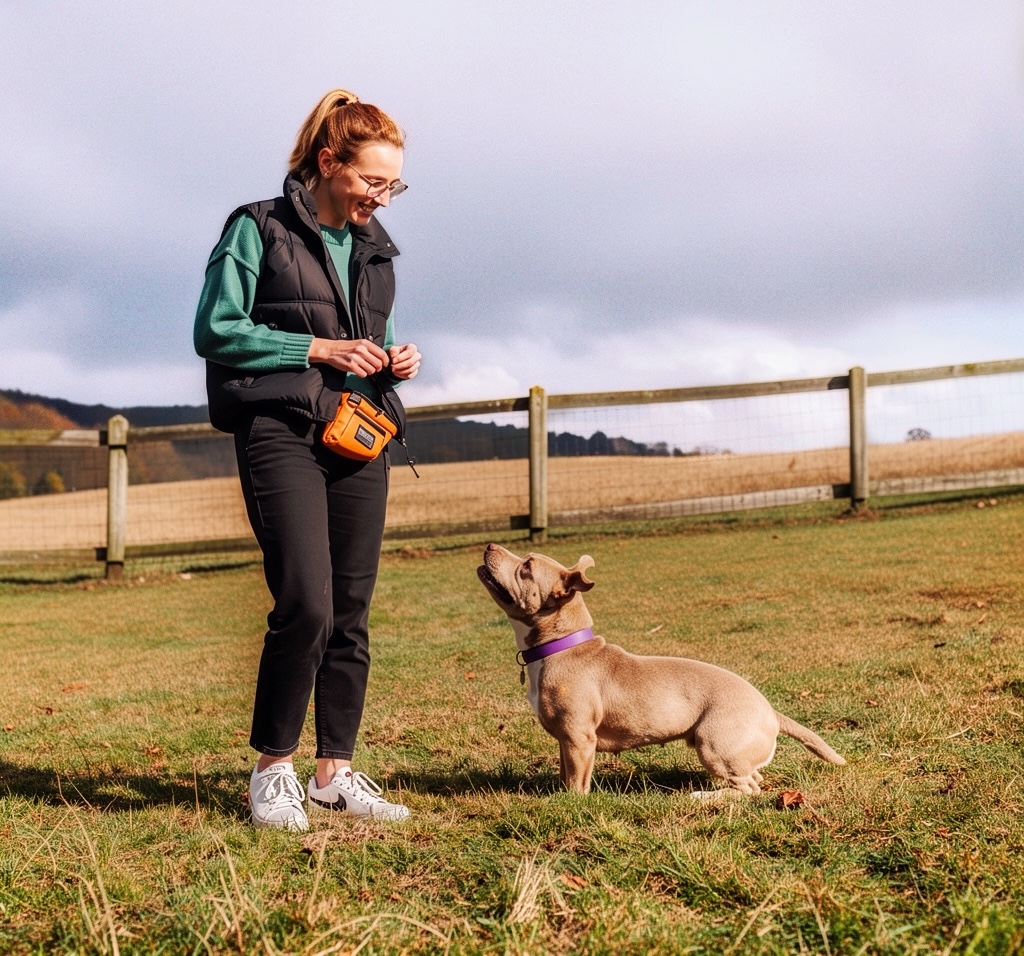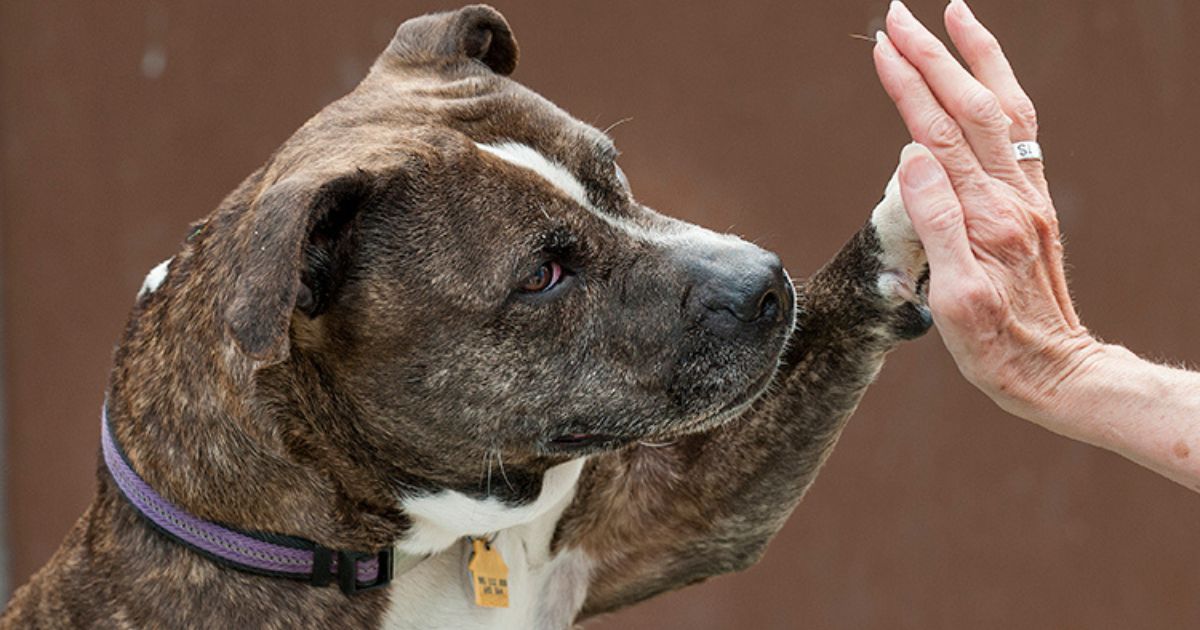The following is an updated version of a blog posted in 2013.
In 2015, we’re still being asked: What role should breed – breed identification and breed labeling – play in today’s animal shelters?
Thanks to years of research we all know about the inaccuracy of breed labeling based on visual inspection, so perhaps the question should be: Why aren’t more shelters removing breed labeling?
In 2014, Orange County Animal Services (OCAS) in Florida, removed breed labels from its kennel cards and website. A year later OCAS, a municipal shelter, has seen an increase in adoptions. The same goes for Capital Area Humane Society in Lansing, Michigan where breed was removed from their kennel cards. Instead the cards focus on sharing information about the individual dog. Progressive shelters can and do remove breed labels…without any backlash from the public.
But why bother?
Because too many dogs are mislabeled with inaccurate guesses, too many assumptions and predictions about behavior are made based on behavior traits associated with the assigned breed label, and too many dogs are unfairly penalized for the breed label they’re given. Shelters need to recognize and work to counter this.
When shelters label dogs of unknown origin they are making a guess. But that’s not how adopters interpret the label. They perceive the breed label as fact. And in our society, we still equate breed label with implied behavior. So adopters are being (unintentionally) mislead into thinking that the label means something about the dog’s behavior. But that just isn’t the case. Our guesses at breed label are not accurate predictors of anything.
Shelters can and should be more clear with the public, so that our guesses at breed are not interpreted as accurate predictors of behavior.
We also know that the context in which we present dogs to the public shapes how they are perceived, this includes breed label and setting. In Lisa Gunter’s 2012 study, it was confirmed that the setting in which we view dogs – in particular, who is standing next to them – can dramatically influence how people perceive the dogs. So the context in which we view all dogs (not just “pit bull” dogs), shapes how potential adopters perceive the dogs.
Our job is to help the public see the dog that’s right in front of them.
That means helping them see the individual dog, free of prejudice, stereotypes, and assumptions that are based on a known pedigree, a breed label guess, physical appearance, or their past history.
While some shelters continue to guess at breeds or sink resources into DNA testing their dogs (note that even a DNA test on a mixed breed dog doesn’t predict behavior), the sustainable solution isn’t that we need to get better or work harder at identifying breeds or breed labeling the dogs. It’s to focus on seeing all dogs as individuals.
FREQUENTLY ASKED QUESTIONS
It can be a challenge for all of us to think outside the breed box, so we’d like to address some common questions and concerns. Here are our most frequently asked questions regarding breed and breed traits in animal shelters:
Isn’t it important to know a dog’s breed, so we can share their breed traits and then adopters will know what to expect? Aren’t breed traits just more information to share with adopters?
Breed traits most certainly exist. However, how breed traits present themselves in dogs, particularly in mixed breed dogs of unknown origins (the majority of dogs found in our shelter system), varies tremendously. Therefore, a guess at how a breed trait may or may not manifest itself in a dog is not nearly as reliable as the information shelters can gather by observing the dogs in their care. If you observe breed traits, share them with the adopter. If you don’t observe them, don’t assume they’re there.
Please note that breed traits don’t apply to mixed breed dogs. Mixed breed dogs are not any breed of dog at all. Pure breed dogs are bred from closed gene pools. Mixed breed dogs are not from closed or coherent gene pools and cannot be considered a member of any breed. They have more in common genetically with ALL dogs, then any one breed in particular.
And remember that breed is just one part of any individual dog – as is their socialization, training, genetics, environment, etc. Traits related to breed are not the whole dog. The whole dog is the individual. Breed traits are a just a possible slice of the pie.
No matter what a dog’s breed or mix may be, when we give equal or more weight to breed traits, rather than focusing on what we’ve observed about a dog’s individual needs, we can hinder their chances at a successful match. Get to know the whole dog.
When dogs are improperly identified, do we cause problems for the adopters and/or the dogs? Will adopters think we’re trying pass off “pit bull” dogs as other breeds and stop trusting us?
We believe that honesty is the best policy. The majority of dogs in shelters are mixed breed dogs. Research tells us that visual identification of mixed breed dogs is highly inaccurate. Unless you know what a dog’s breed mix is for sure – you know the parents or have paperwork – speculating about the possible breed mix is just a guess.
If you wish to be 100% completely honest with your adopters, tell them the truth: you aren’t sure what the breed mix might be. Most importantly, tell them the truth about the dog’s actual behavior based on your observations and evaluations. Remember, people are adopting a DOG, not a breed. How that dog behaves is the key to a good match for potential adopters.
If the adopters notice physical markings or certain behaviors that lead them to believe a dog might be a certain breed (for example: a black mark on the dog’s tongue has them guessing he might be a Chow mix), be honest in your response by acknowledging that it is a possibility. Here’s an example of how you might respond: “Yes, it is possible this dog might have some Chow in there, though we don’t know for sure. How do you feel about that? Would that be ok with your landlord?”
If you’re concerned about someone else (an insurance company, Animal Control, etc.) identifying the dog as a “pit bull”, let the adopters know this is a possibility and determine how that may affect them legally. Be aware of any potential breed restrictions in your community and give resources to educate your adopters about these realities.
Share what you know for sure and be clear about what’s a guess. They will appreciate your honesty.
Lots of the dogs we see have the characteristics of a “pit bull”, so shouldn’t they be identified as a pit bull or pit mix?
To begin with, there is no agreed upon or standard definition of a “pit bull.” The phrase “pit bull” means something different to everyone and varies from one shelter to the next. So, the use of that label, “pit bull” is subjective – it’s an opinion, not a breed or a fact.
If all you have is a visual inspection and no pedigree, then you’re guessing at a dog’s breed or breed mix when you choose to label them as “pit bulls”. You can label the dogs however you choose, but be careful not to make behavior predictions based on this guess and don’t imply to adopters that a label accurately indicates anything about a dog’s suitability for adoption or what kind of home he needs.
The label doesn’t change the dog, but often the labels will change how we perceive the dog.
Each dog is an individual. Help adopters to see past labels and get to know the dog’s actual pet qualities.
Should we DNA test the dogs in our shelter to find out?
No, we do not recommend that shelters give their dogs DNA tests to determine its breed or breed mix. Dog behavior is a complex mix of nature and nurture and knowing a dog’s DNA is only one piece of the puzzle. It’s just another tool in the toolbox. Shelters are in the business of adopting out companion animals and the only way to know if a dog is going to be a good companion is to get to know that individual dog. Shelters are better off spending their time and money getting to know the dogs in their care.
We want to call our dogs of unknown origins “mixed breed” or “American Shelter Dogs”, but the shelter software doesn’t give us that option. How should we label the dogs?
You may be forced to pick a primary breed in shelter software, but you can make other notes on their profiles that explain that this is just a guess. We use this language on Petfinder:
The petfinder.com system requires that we choose a predominant breed or breed mix for our dogs. Visual breed identification in dogs is unreliable so for most of the dogs we are only guessing at predominant breed or breed mix. We get to know each dog as an individual and will do our best to describe each of our dogs based on personality, not by breed label.

Feel free to copy and use it! We even have free posters and kennel cards with this info to help get the conversation going with adopters.
In 2015 Hillsborough County Animal Services Pet Resource Center in Florida created large, weather-proof banners with this information to help adopters understand that the labels they see are just guesses.
In the past, we thought that we needed to get better at breed labeling dogs, but Dr. Voith’s research showed us that we cannot get better at it. And Dr. Marder and Janis Bradley taught us that there is behavior variability within each breed, and even more among breed mixes, so that we cannot predict a dog’s behavior based on breed alone.
It’s clear that rather than trying to get better at guessing dog breed labels, the focus should be on gathering information about each individual dog as a whole. If shelters do choose to breed label dogs, they must make it clear to the public that they cannot accurately predict future behaviors based on those labels.
Put the focus on getting to know the dogs. What we discover about a dog’s personality will be far more valuable to adopters than any label.



